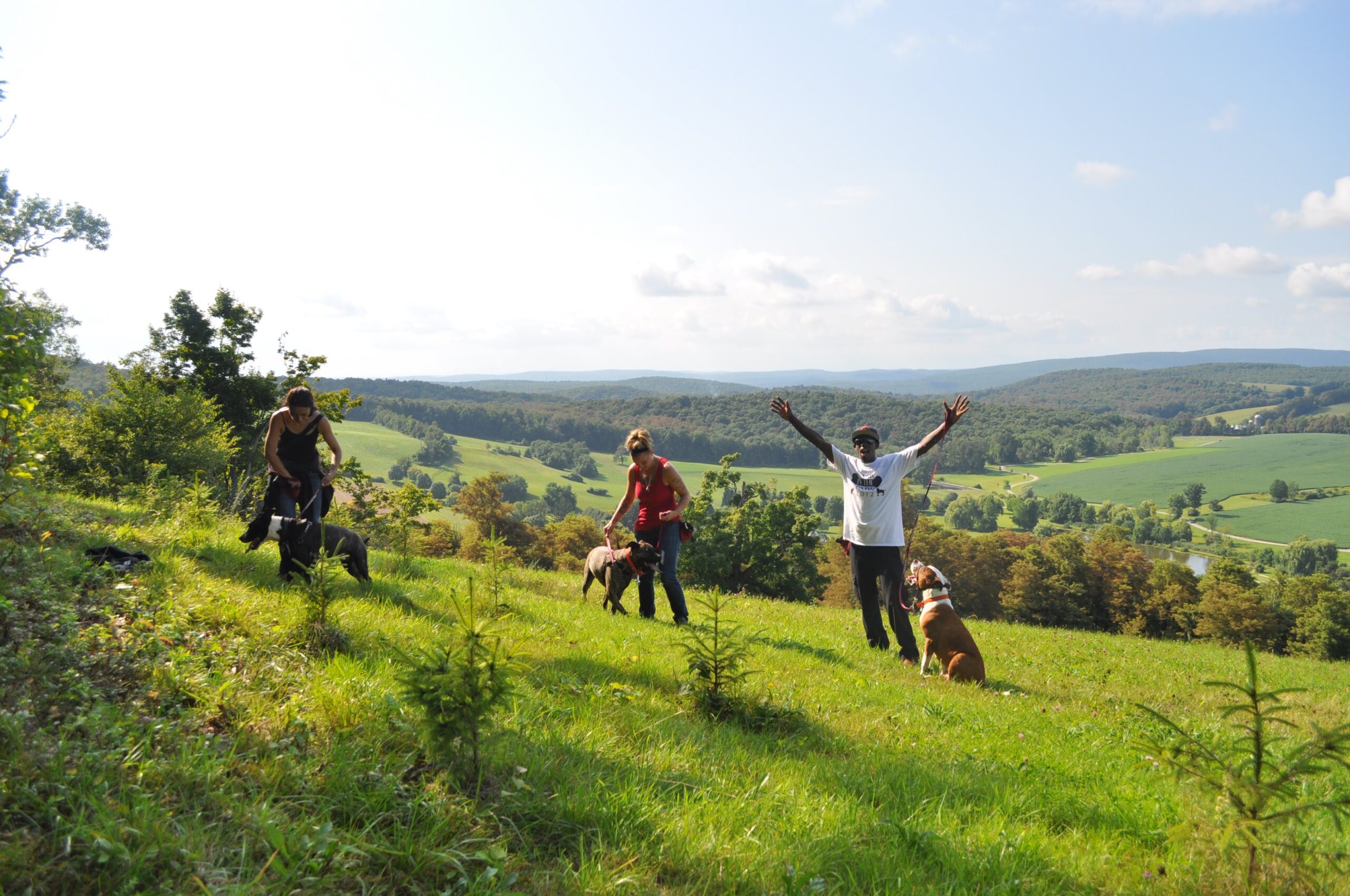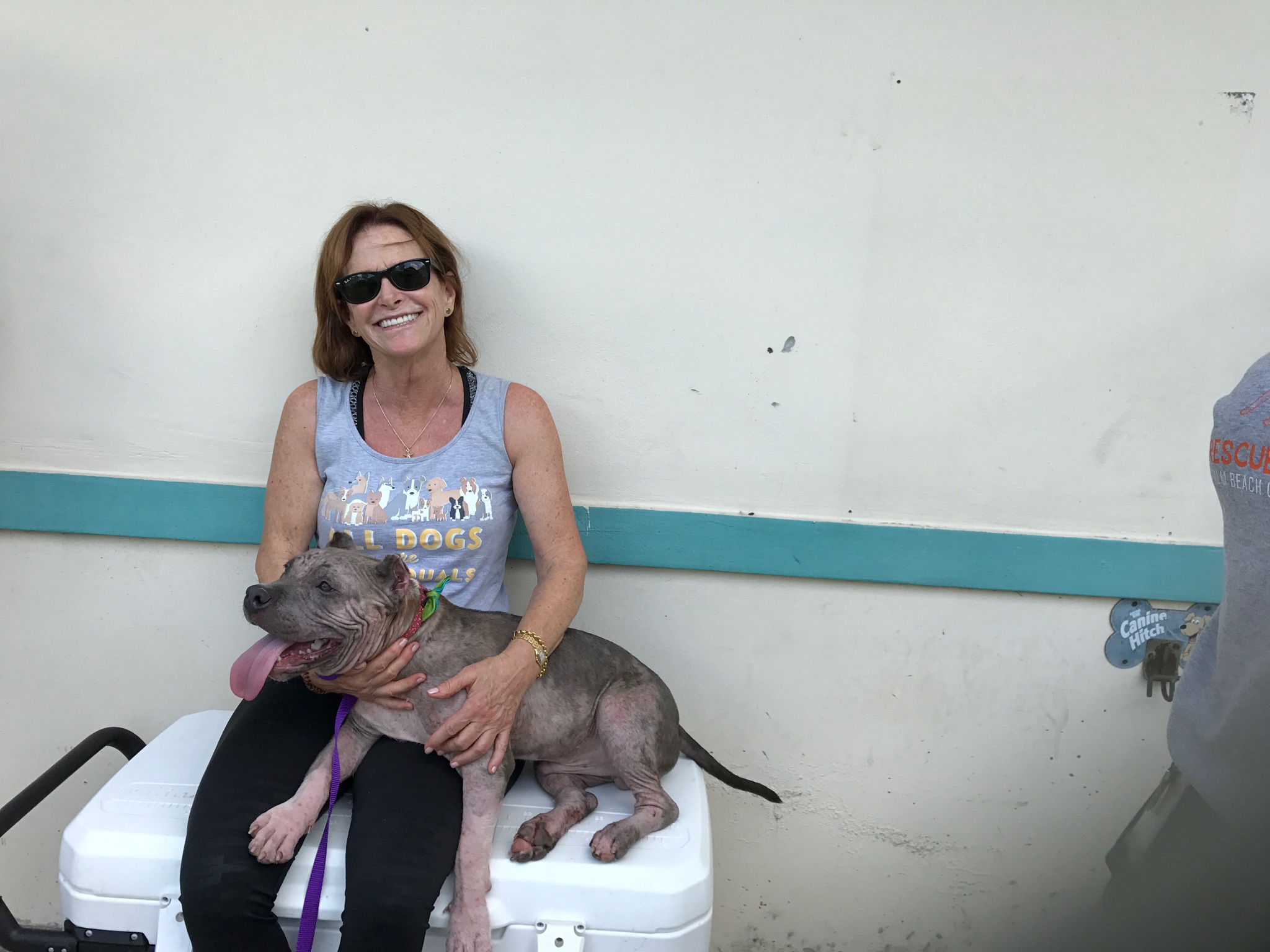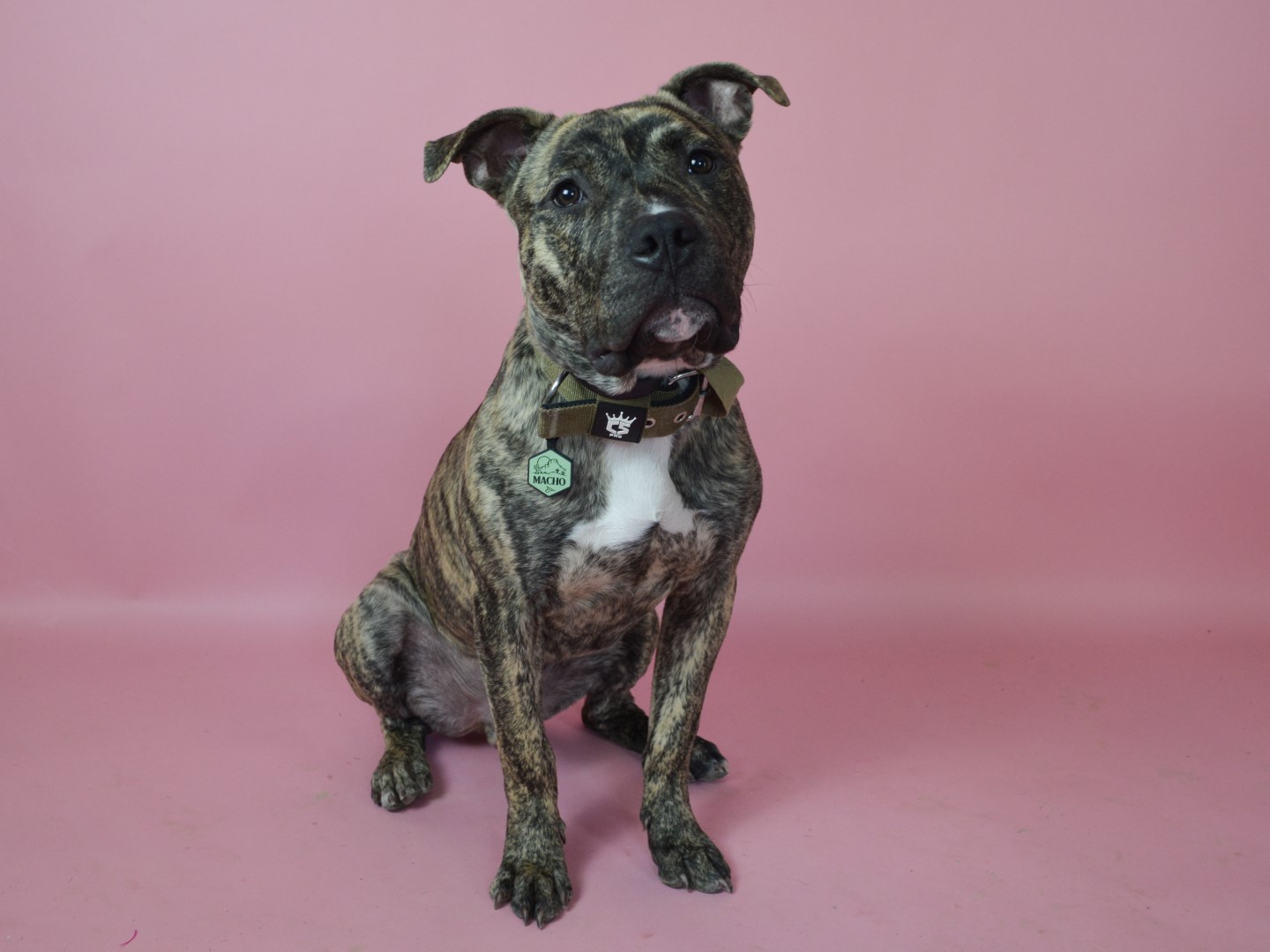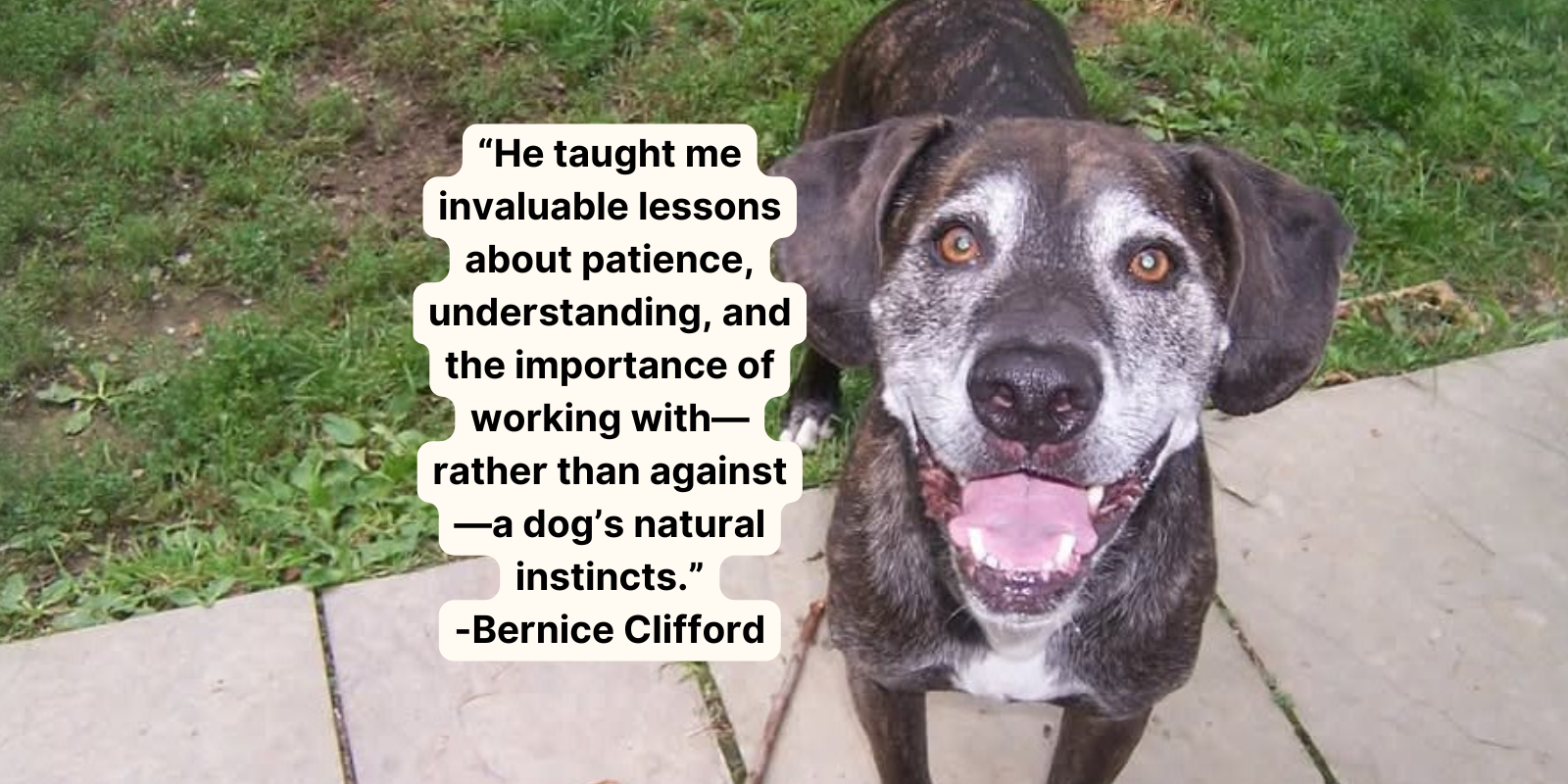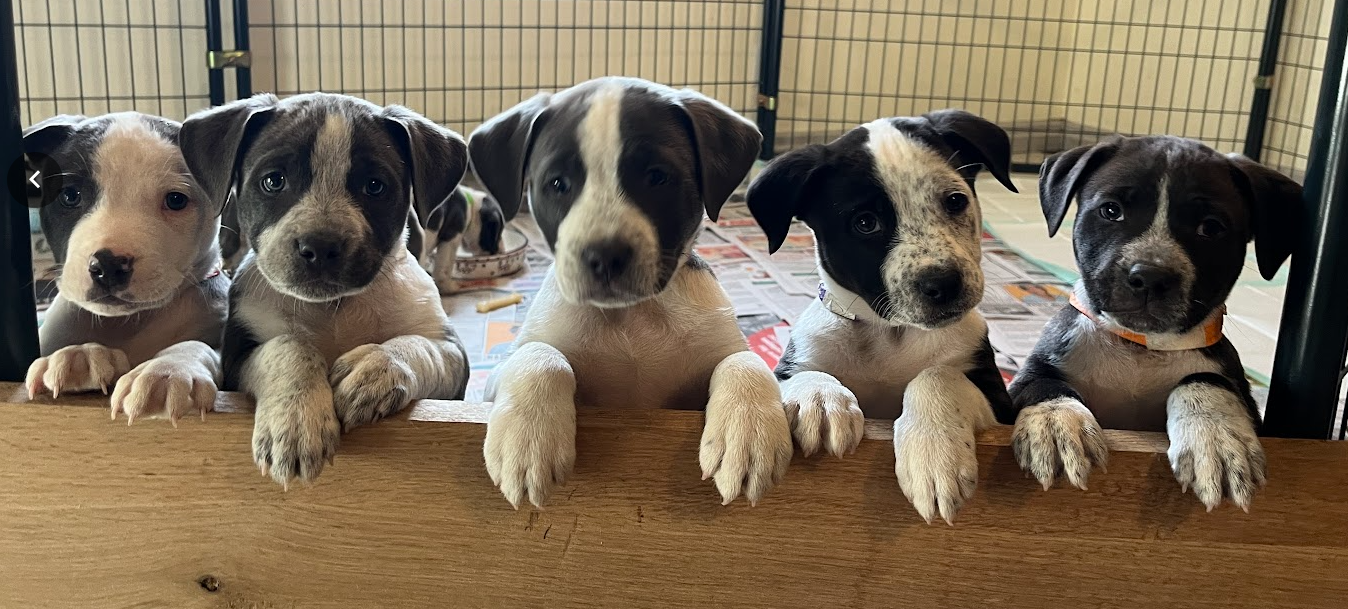Last year, we had the privilege of working with the staff at Capital Area Humane Society in Lansing, Michigan. In addition to sending staff members to our internships, CAHS also welcomed AFF to visit their shelter and provide more hands-on training.

We recently received an update from Samantha Miller and Ashley Hetzner, CAHS’ behavior manager and behavior assistant (respectively), about the incredible progress that the shelter has made in the past year. Not only have they dropped all breed restrictions, but they’ve increased adoptions!
We asked Samantha and Ashley to tell us more about the big changes (and big successes) they’ve undergone.
AFF: Prior to now, were there any specific policies or restrictions that applied to the “pit bull” dog adoptions at CAHS?
CAHS: Yes, we had several policies that applied only to “pit bulls” dogs.
1. We had a limit to the number of pit bulls that we could have up for adoption. No more than 20% of our adult dog population could be “pit bull” dogs.

2. All of our dogs go through a behavior evaluation process, but “pit bull” dogs had to go through extra steps. For a while we used an “ambassador dog” evaluation. But even after stopping that type of extra evaluation, pit bulls still had to test better than other dogs in order to go up for adoption. Certain behaviors meant automatic euthanasia only for pit bulls: dog aggression on leash, food/resource guarding, fear, aggression toward cats, or any type of aggressive-looking behaviors in the kennel (growling, lunging, showing teeth), to name a few. Other types of dogs could get away with the same behaviors.
3. Potential adopters had to fill out extra paperwork to be considered for a “pit bull” dog. There couldn’t be any concerns about their application. They had to be over 21 years old. They could not have any intact dogs in the home. They were required to bring in their children and dogs to meet the new dog (which was not always required for other dogs – although we eventually moved to requiring dog/child meets for all dogs). At one point we required the other dog in the home to be opposite sex.

4. We would occasionally make exceptions about landlord checks or other policies, but never for “pit bull” dogs.
5. After going through the extra paperwork, it was required to be approved by a supervisor. After that, a member of the behavior department would come and do a “’pit bull’ dog consult” which went over dog aggression, dog parks, myths and stereotypes about “pit bull” dogs, how and why to get CGC certified/become a breed ambassador, and how they would have to be better dog owners than anyone else to make up for the stigma facing their dog.
6. We offered a free behavior consult with our staff for anyone adopting a “pit bull” dog that was having issues in the home.
7. All “pit bull” dogs were microchipped automatically. Other dogs were only microchipped if the adopter asked for it.

How did these additional layers to the adoption process affect adopter’s perceptions of the “pit bull” dogs?
At the time we didn’t think it would affect their perception of the dogs! We figured if someone wanted a “pit bull” dog, they would understand that we felt we had a duty to protect them. Every once in awhile we would get a comment from someone supporting our policies, so that made us think we were on the right track.
We would say things like “’pit bull’ dogs are no different than other dogs, but [then we would have different standards for adoption]…” and we thought just saying that made up for all the other things we were doing that implied pit bulls are different. Even after going to AFF, a lot of the staff was skeptical.

However, since making changes we have come to realize what we were really saying to people who came to adopt a “pit bull” dog.
We have had many adopters who came back to us for a second dog, comment on how much faster, easier, and less intense our adoption process is now. We had one family that adopted a “pit bull” dog from us a year ago. They were so scared by what we had told them that they had never introduced their dog to another dog in case he was aggressive. They were nervous to bring him in for a meet-and-greet with the new dog for the same reason. The family asked questions like “we have to do x, y, and z because it’s a pit bull, right?”
They learned that nonsense from us! That really sealed it for me personally what a disservice we had done for these dogs for so long.

Our culture at the shelter has shifted toward one of understanding, acceptance, and open-mindedness.
CAHS has made a lot of changes in the past year. For example, you recently dropped a variety of restrictions on all adoptions, such as requiring mandatory dog intros. Can you tell us more about those changes?
The past year has been really exciting and honestly a little scary – we have made so many changes. What I think is the most important change is that we stopped discriminating against “pit bull” dogs both in our behavior evaluation and our adoption process. There are no more requirements for them to pass our behavior evaluation than any other dog. We have since had “pit bull” dogs up for adoption with fear issues, dog selectivity, cat aggression, resource guarding, and imperfect kennel behavior.
We stopped using the phrase “this dog has x, y, and z behavior issues, and he’s a pit bull.” Being labeled a “pit bull” is no longer considered Strike 1 for the dogs that are in our care.

On the adoptions side of things, we did away with the “pit bull” dog consult and the extra set of questions for people wanting to adopt “pit bull” dogs. We no longer require anything extra from those adopters compared to those who choose other types of dog to adopt. We dropped mandatory landlord checks, parent approval for adopters under 21, vet references, and child/dog intros. We still have these tools available when we feel they are warranted, but not as a blanket policy.
After Caitlin Quinn (AFF’s former Director of Operations), came to our shelter and we started making changes for “pit bull” dogs, we began to question some of the other policies we had had for years. We came to the conclusion that we had been behind the times not just when it came to “pit bull” dogs, and we were able to implement changes to other areas as well.

How did the restrictions directly affect adoptions? Have you seen an increase in adoptions since they were removed?
Adoptions have increased. 2014 had just under 14% more adoptions than the previous year. We had our all time highest adoption month in October, and our all time highest adoption day in December during our annual holiday open house. We did 120 adoptions in one day, which is huge for us. Compare that to the previous year’s holiday open house where we did 25 adoptions.
Had we been requiring landlord checks, dog/child/cat intros, address verification, parent checks, vet references, etc. we wouldn’t have had enough time in the day to do 120 adoptions. The big worry was that we would get an influx of returns after dropping so many requirements, and we really haven’t seen that.

You also made some changes to your kennel cards – they no longer list the breed of dog. Can you tell us more about your approach?
We tried to make our kennel cards easier to read, and give people more information about the individual dog they are looking at. So we have things like energy level, how they might do with kids, cats, and dogs, if they’re housebroken, where they came from, etc.
If someone wants to know what our breed guess is, they can ask the front desk. That way, when we’re telling them what breeds we did guess, we can also have the conversation about breed identification and why looks don’t predict behavior.
How have adopters responded to the change in kennel cards?
Before the new kennel cards debuted, we had several meetings and staff training sessions to prepare everyone for what to say when people asked about the breed. We figured there would be a ton of questions from people wondering why we omitted it from the kennel card, and frustrations about that. So we put them up after the holiday open house when our kennels were pretty empty to limit the outcry.

It all sounds so silly now, because the response ended up being basically no response.
We get occasional questions, but people are generally satisfied when we explain why we don’t know what breed most of our dogs are. Of course we will occasionally get that one person who demands we tell them the breed or thinks we’re trying to hide something, but it has been rare!
We congratulate CAHS for all of their success – we know they’ll keep rocking it in 2015 and beyond!

